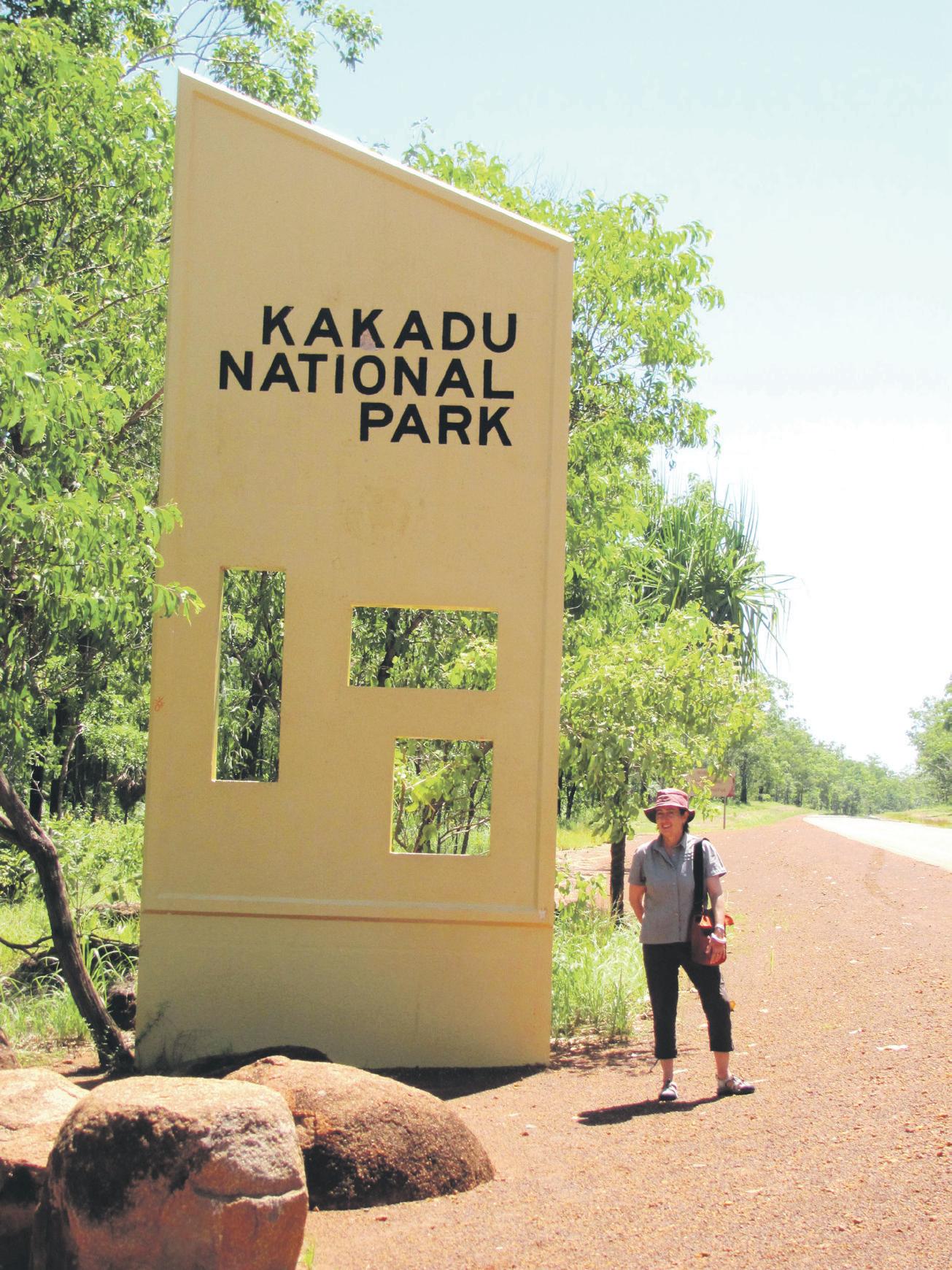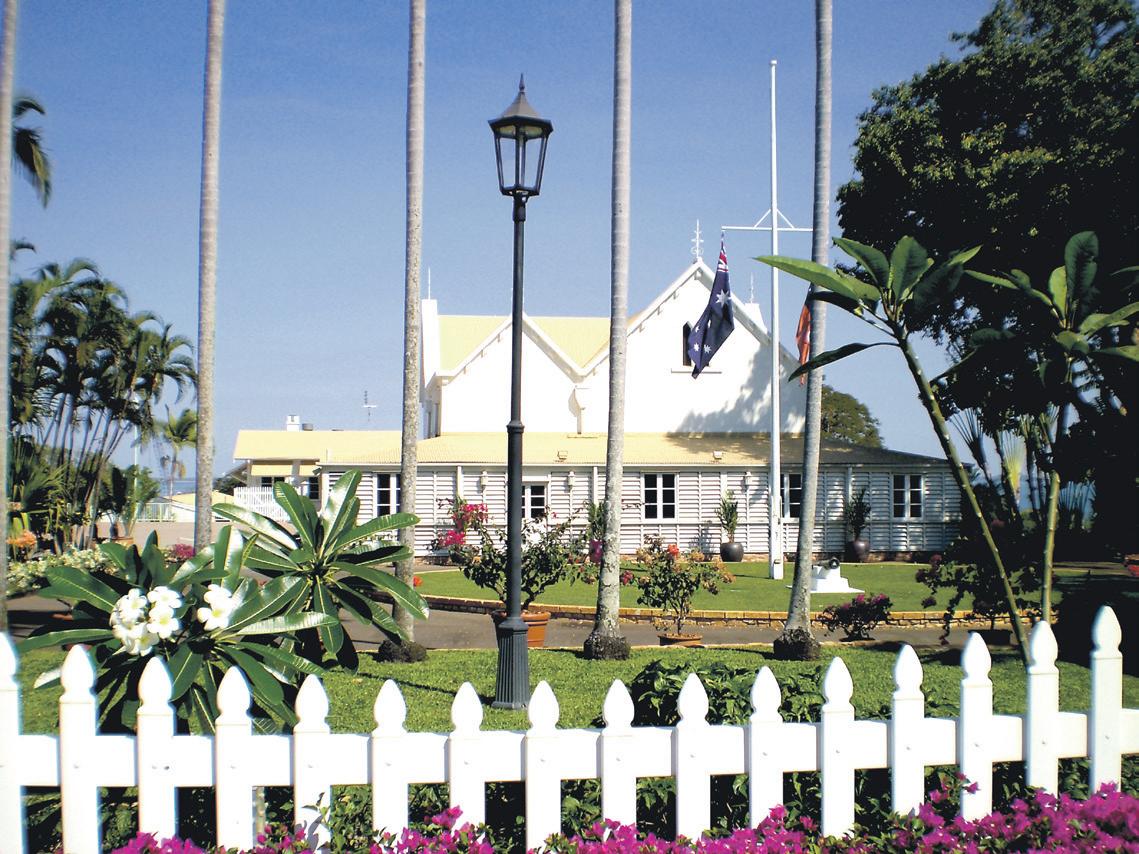
5 minute read
Darwin and the Top End
from 2013-04 Sydney (1)
by Indian Link
the interior linked Australia with the rest of the world in 1872.
BY PETRA O’NEILL
It was a balmy night of clear skies, with stars and an almost full moon, insects were humming and I was gently being lulled to sleep. But suddenly, there came stomping, snorts and worst of all, high pitched squeals.
I was camping in Kakadu in Australia’s Top End several days into my journey that began in the roistering town of Darwin, the capital city of the Northern Territory.
This was my fifth visit to Darwin, as I had developed a fondness for this city that has a certain untamed frontier quality to it, with straight-talking inhabitants and cross cultural influences from Asia and more recently, the United Kingdom with construction, mining, oil and gas creating a boom town atmosphere. Closer to Asia than to the rest of Australia, both geographically and in spirit, the northern capital is home to people representing over 60 ethnic groups and indigenous Australians, many descended from the Larrakia.
Darwin was named by John Lort Stokes in 1839 after his friend, Charles Darwin. The great explorer John McDouall Stuart managed to trek overland from south to north in 1862, a journey that can now be completed onboard the Ghan, one of the world’s great rail journeys. The overland telegraph built across
Lyons Cottage, Brown’s Mart and Government House date back to this period, though few historic buildings remain. This is a reflection of the events that occurred here. From the 46 air raids by the Japanese during World War II, to Cyclone Tracy which flattened much of the city in 1974, leaving little more than a pile of rubble.
With a population of roughly 127,000, Darwin’s compact city centre is ideal for walking. The Esplanade is shady and lush, and is full of joggers and people taking a morning or sunset stroll.
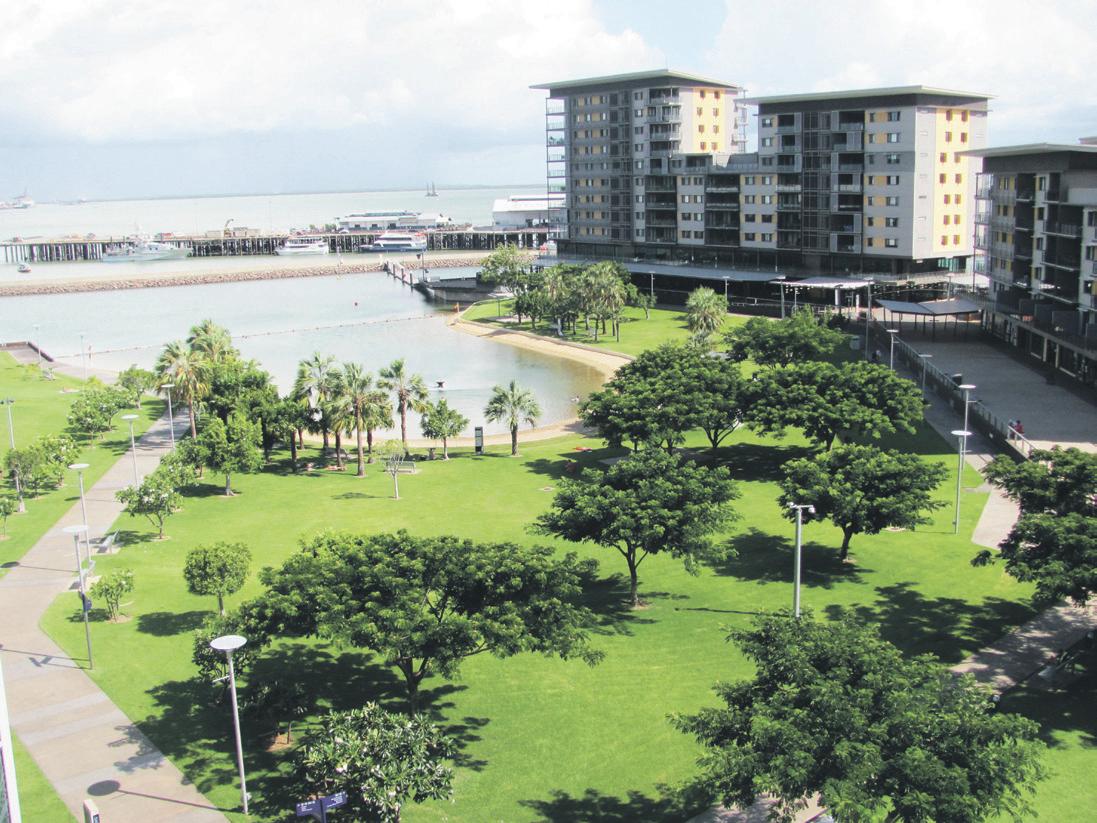
It was here that the Darwin Rebellion occurred, when in 1918 a crowd marched towards Government House over efforts to halt the sale of beer! Set one street back is backpacker central, with busy Mitchell Street home to restaurants, pubs and cafes.
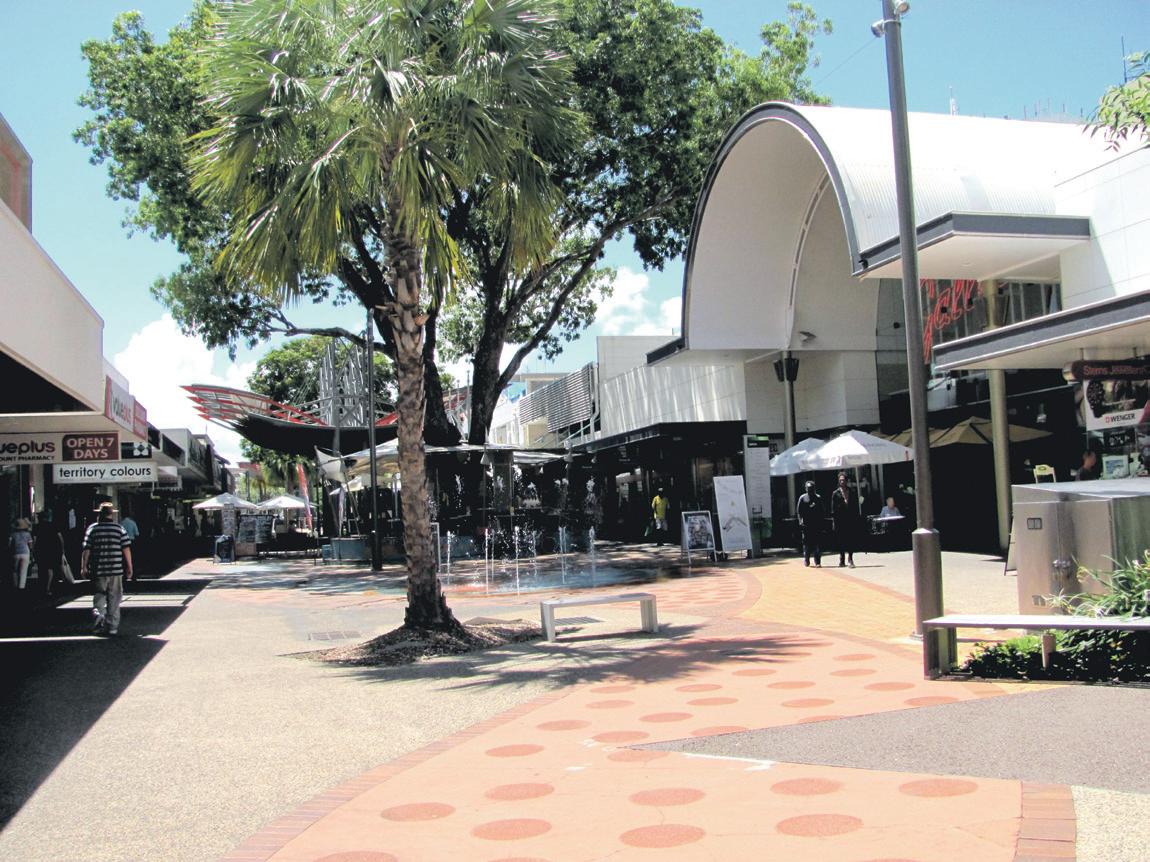
You can visit Cullen Bay to see the luxury homes and ‘tinnies’ moored at the marina. Nearby, the George Brown Darwin Botanic Gardens established in the 1870s, has over 1,500 tropical plant species including palms, orchids, ferns and a rainforest. Onto the Museum and Art Gallery of the Northern Territory, where you’ll meet Sweetie, a massive (deceased) crocodile and view one of Australia’s best indigenous art galleries.
Darwin has up to seven a week colourful, pulsing markets, (in the dry season from April to October). They are a visible expression of the city’s multicultural diversity and it’s where you can sample some of the best food to be had here. You can experience them all on a market crawl, that starts at Mindil Beach Sunset Market. Travellers head here on a Thursday night for its food stalls from around the world, handmade craft, live bands and street performers.
On Friday, head to Palmerston Market for exotic food, produce and craft stalls. Saturday morning offers Coolalinga Market and the Parap Village Market, where locals head for laksa, satay and smoothies. On Sunday, visit Rapid Creek Big Flea Market, Darwin’s oldest for the freshest tropical produce with turmeric, pink tipped galangal, lemongrass and other tropical herbs in abundance. At nearby Nightcliff Market the vibe is relaxed with good food and coffee, live music and large shady trees, where you can sample Asian cuisine from Vietnamese rice paper rolls, Indonesian Nasi Goreng or Malaysian roti. But don’t mistake the stallholders as recent arrivals, since they may be fifth-generation Australians who came in the late 1800s from the Philippines, Japan and Timor (as divers for the pearling industry), or from China (to work in the goldfields).
Darwin is one place where you will appreciate the vastness of distances within Australia, with travellers underestimating the time it takes to explore. You’ll be well rewarded by discovering more of the Top End, especially World Heritage listed Kakadu National Park. It is comprised of 20,000 square kilometres, and is listed both for its cultural significance with sacred sites and ancient aboriginal rock carvings, and for the diversity of its flora and fauna. Corkscrew pandanus and termite mounds give way to vast flood plains and rock formations of long sandstone escarpments. Magpie geese are seen in tens of thousands, jabirus and egrets stalk the open shallows, while kites fly overhead, and crocodiles lie on the river banks.
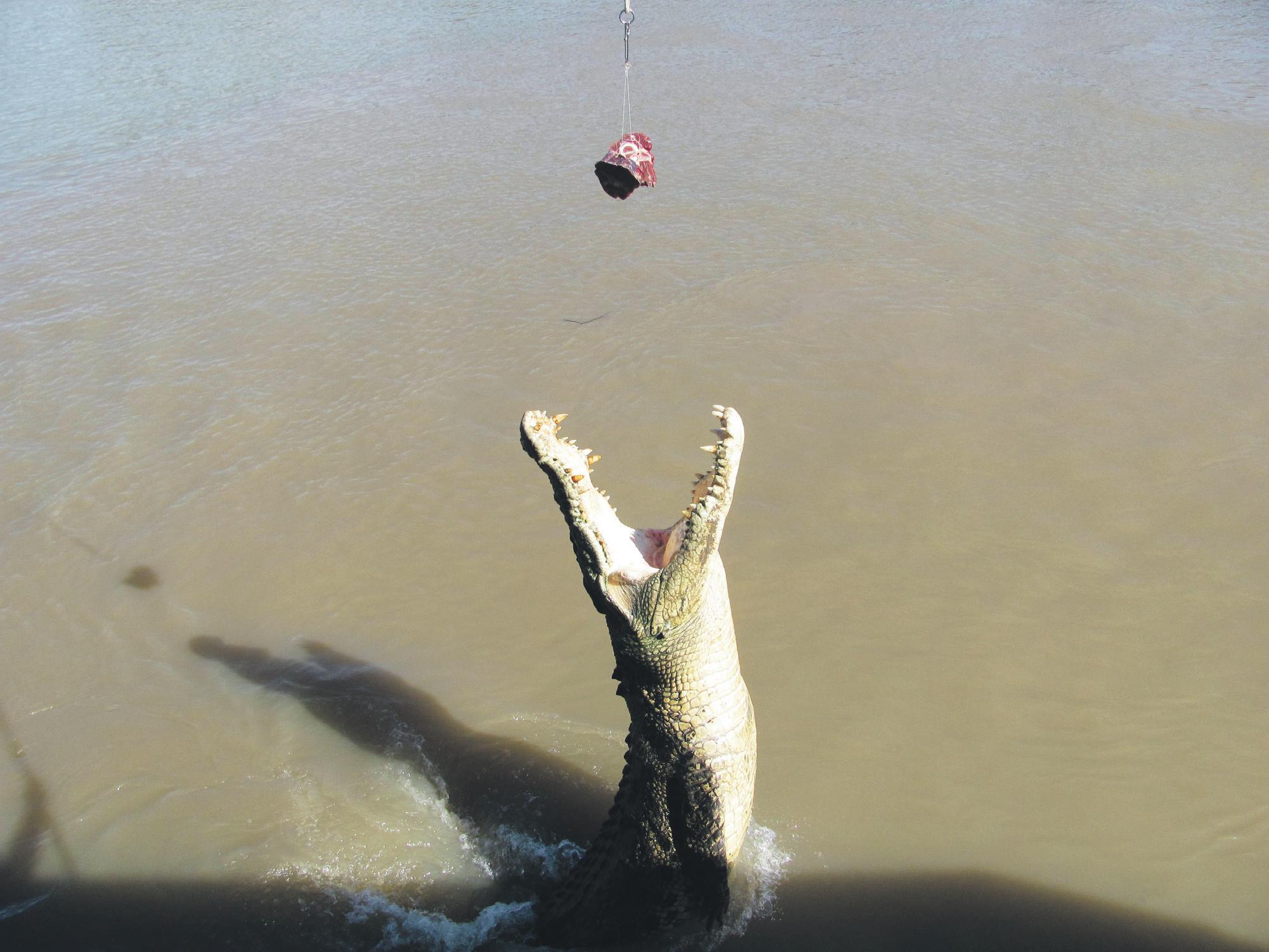
The drive from Darwin to Kakadu is one of my favourite stretches of road, passing through the small hamlet of Humpty Doo to the park entrance. During the wet season from December to March, rivers, billabongs and the wetlands are flooded. After entering the park, we cross our first big river. An aboriginal family heading home are unable to cross. The traditional owners, mostly Bininj or Mungguy, still live within the park. Arriving at our campsite I go for a walk to the top of a hill. Birds fly overhead and the sky turns brilliant shades of pink and orange as the sun recedes. Prongs of lightning illuminate the sky, thunder claps crash overhead, and as the sky turns black with storm clouds, I sense that here nature is wild and everywhere.
At Litchfield National Park we visit termite mounds and several waterholes including Florence Falls, Buley Rockhole, a popular swimming spot for locals with young boys diving from a large tree. We also visit Tolmer Falls to view the water cascading down from the sandstone plateau, and Wangi Falls, which is a large clear pool that was closed due to crocodiles.
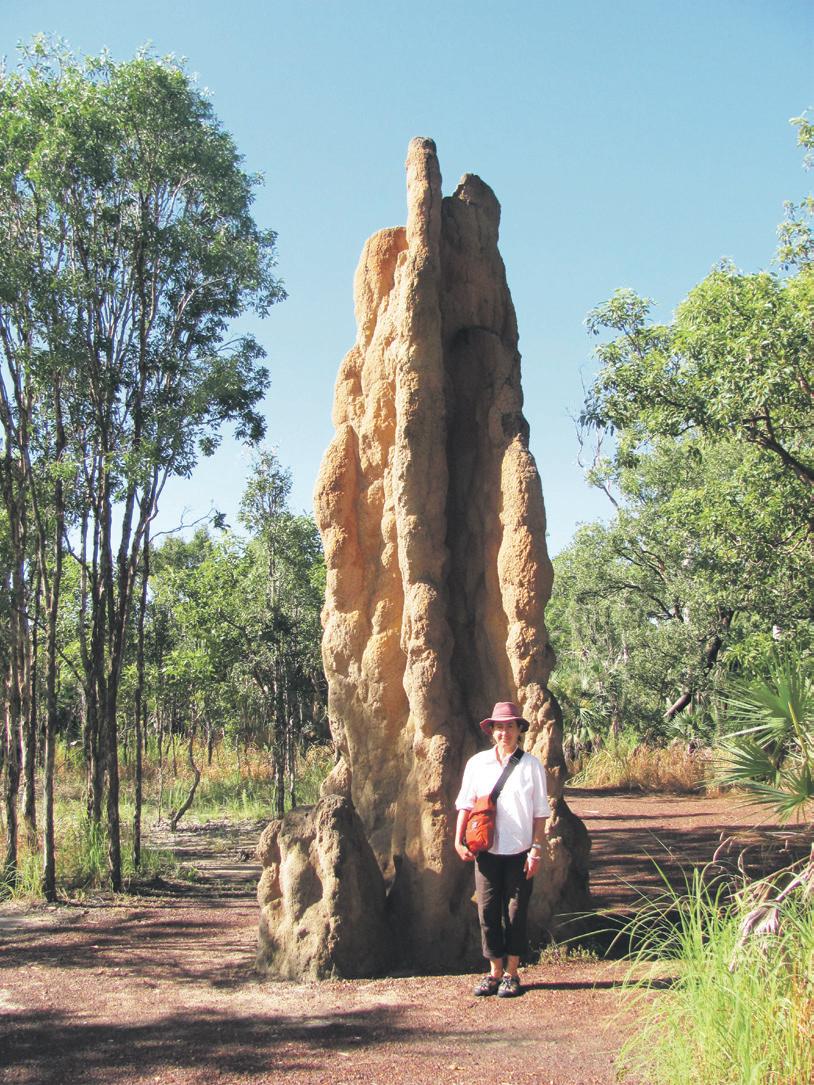
On my final day in Darwin, after two days of camping, I was in need of a double shot espresso. Somehow that led to a morning’s discussion with locals about life in Darwin. I met Sinead Coghlan of Mbantua, an art gallery that specialises in indigenous art from central Australia. She sent me to meet Peter Moya, an artist and owner of the Java Spice Café that is brightly decorated with an eclectic collection of ceramics and paintings by Australian artists hanging from the walls. A delightful place, I lingered over a great coffee and a large slice of coconut cake. Then I did a very touristy thing. I bought some furry crocodiles, and a genuine buffalo hide hat before my flight home. And yes, I’ve I’ve worn them every day since.
Travel noTebook DARWIN
G ETTING THERE
Jetstar, Qantas and Virgin Australia fly to Darwin.
G ETTING ARO u ND
For airport transfers use the Darwin Airport Shuttle or taxi for two or more. Intrepid Travel 03 9473 2626 www.intrepidtravel.com has an excellent three-day Kakadu Litchfield Safari.
ACCOMMODATION
Melaleuca on Mitchell is a centrally located modern hostel with a friendly vibe. 1300 723 437 www.momdarwin.com With great views of the Arafura Sea, harbour view rooms at the Mantra on the Esplanade are worth the splurge with fully equipped apartments ideal for families. 08 8943 4335 www.mantra.com.au
WHERE TO EAT
Dine at one of many Asian restaurants with Ayuriz and Thailicious good affordable choices. Busy Hanuman is renowned, il Lido and Tramontana for Italian, barramundi at Seafood on Cullen and Saffron for South Indian cuisine. The Java Spice Cafe has great coffee. Four Birds, the Cyclone Cafe in Parap and the Roma Bar are also good.
WHERE TO SHOP
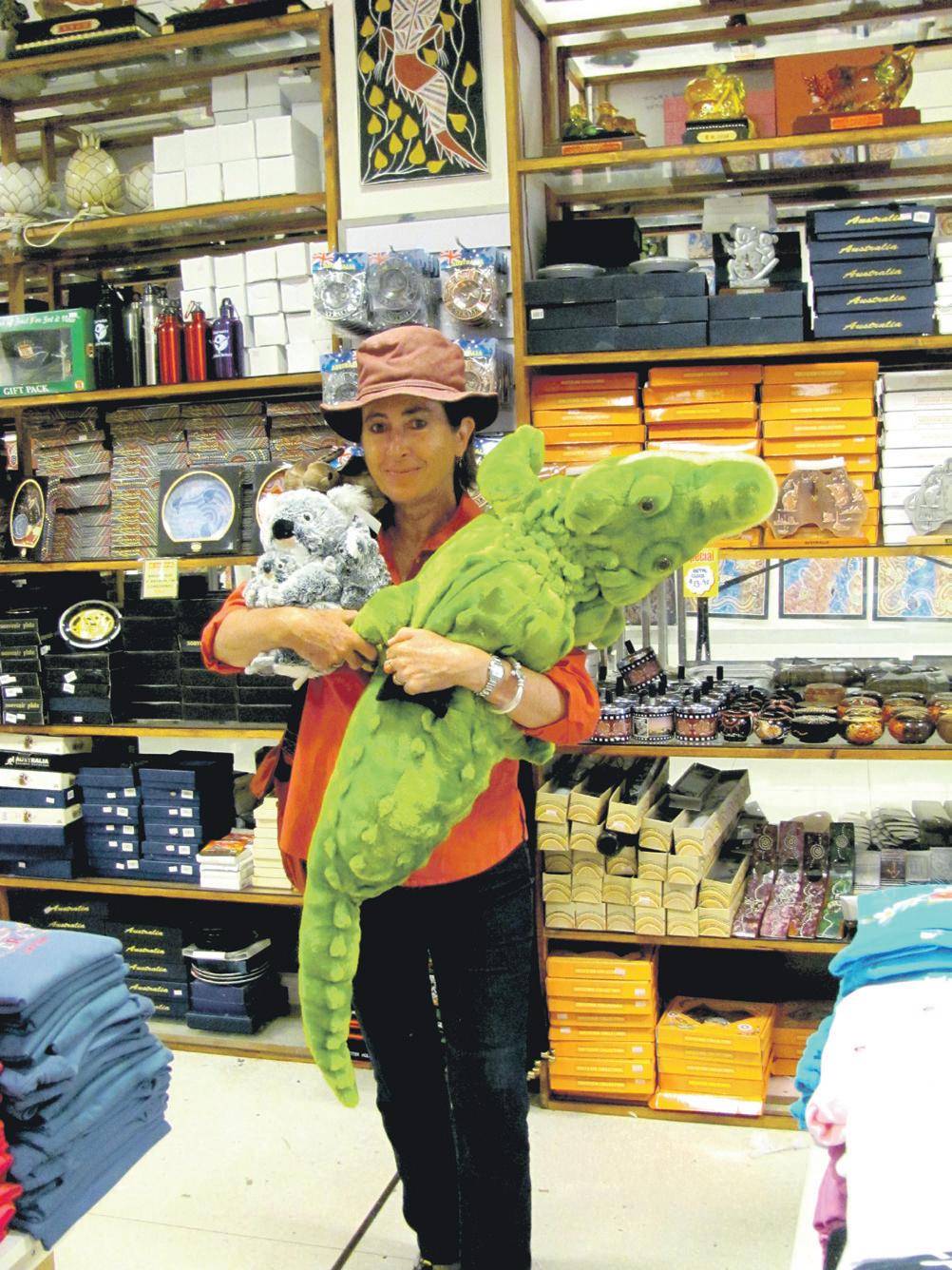
Mbantua specialises in aboriginal art from central Australia. www.mbantua.com
F u RTHER INFORMATION
Adventure Tours in Mitchell Street and Tourism Top End for maps and brochures. www.tourismtopend.com.au
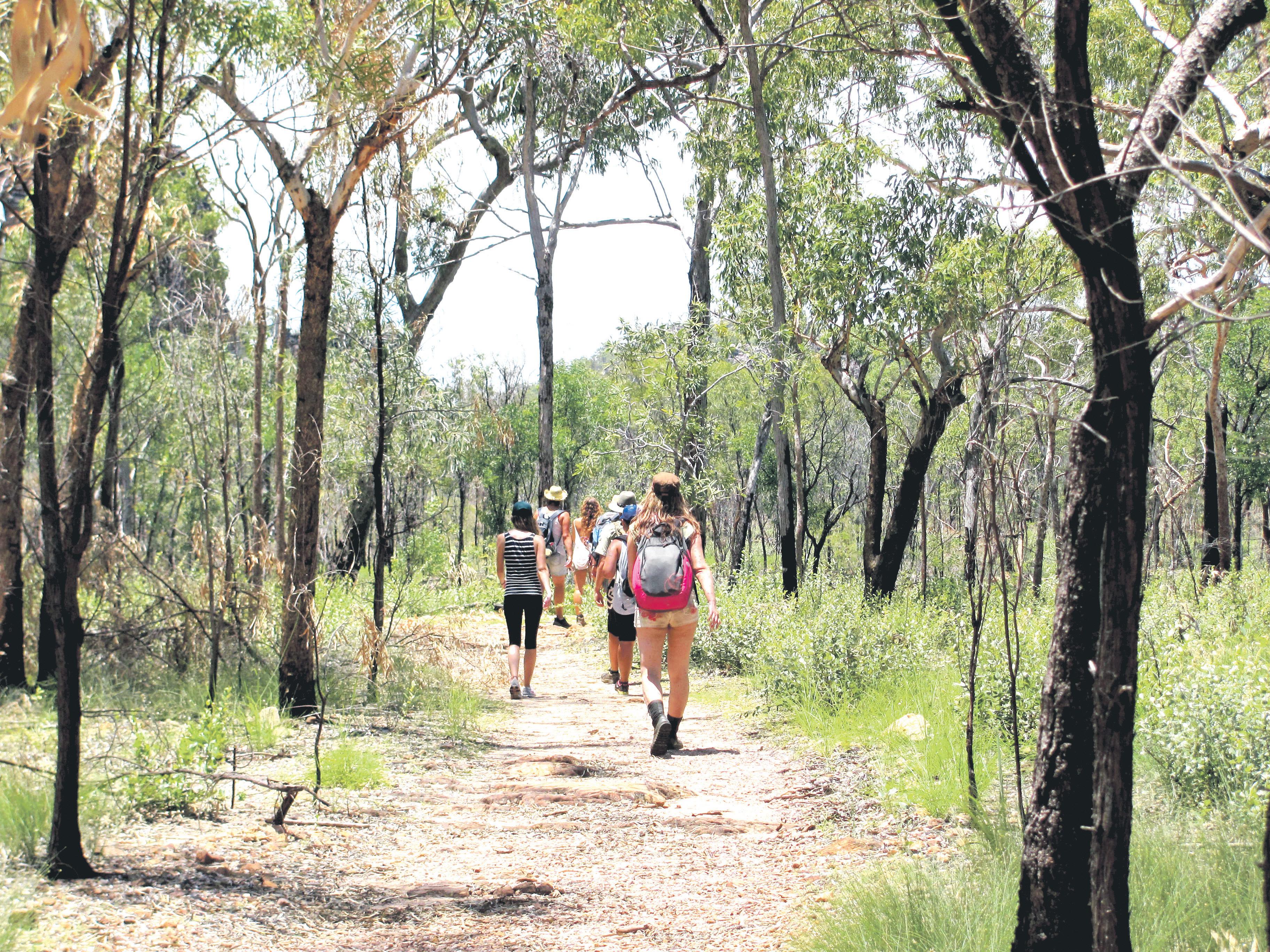
INSIDER TIPS
Darwin Police advise travellers to stick together late at night and stay in well-lit areas. Box jellyfish are present during the wet season and crocodiles are dangerous anytime. Always wear a hat, keep well hydrated and apply sunscreen.

Closer to Asia than to the rest of Australia, both geographically and in spirit, the northern capital is home to people representing over 60 ethnic groups and indigenous Australians, many descended from the Larrakia

Main pic: Florence Falls at Litchfield National Park
Clockwise from top:
Termite mounds at Litchfield National Park

River cruise to view the crocs
Entering Australia’s largest national park
Aboriginal rock art
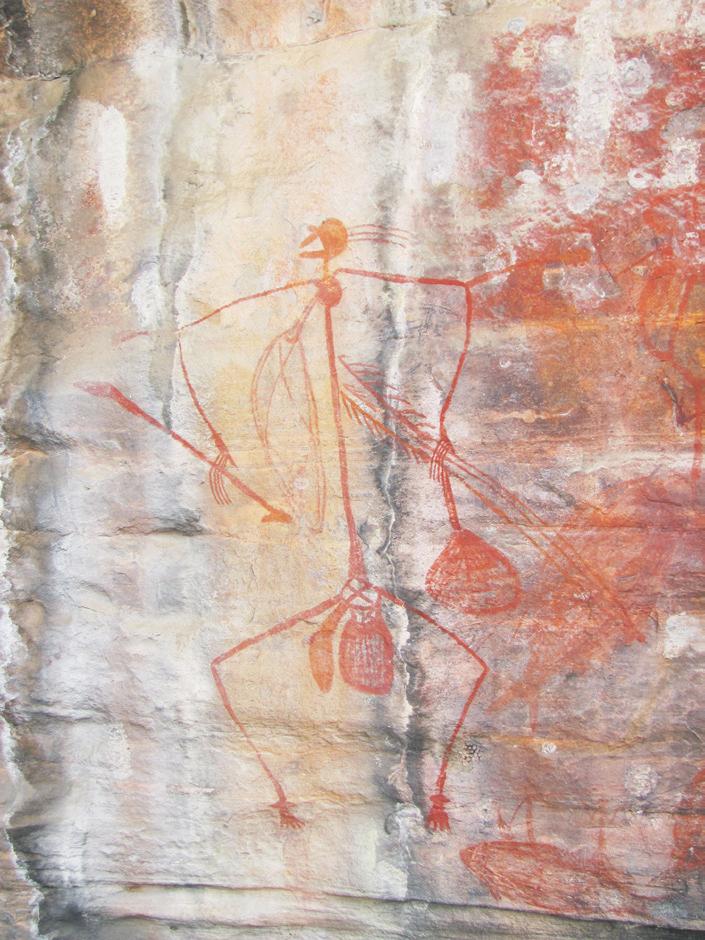
Going walkabout at Kakadu Government House in Darwin
Out shopping
Frill-necked lizard
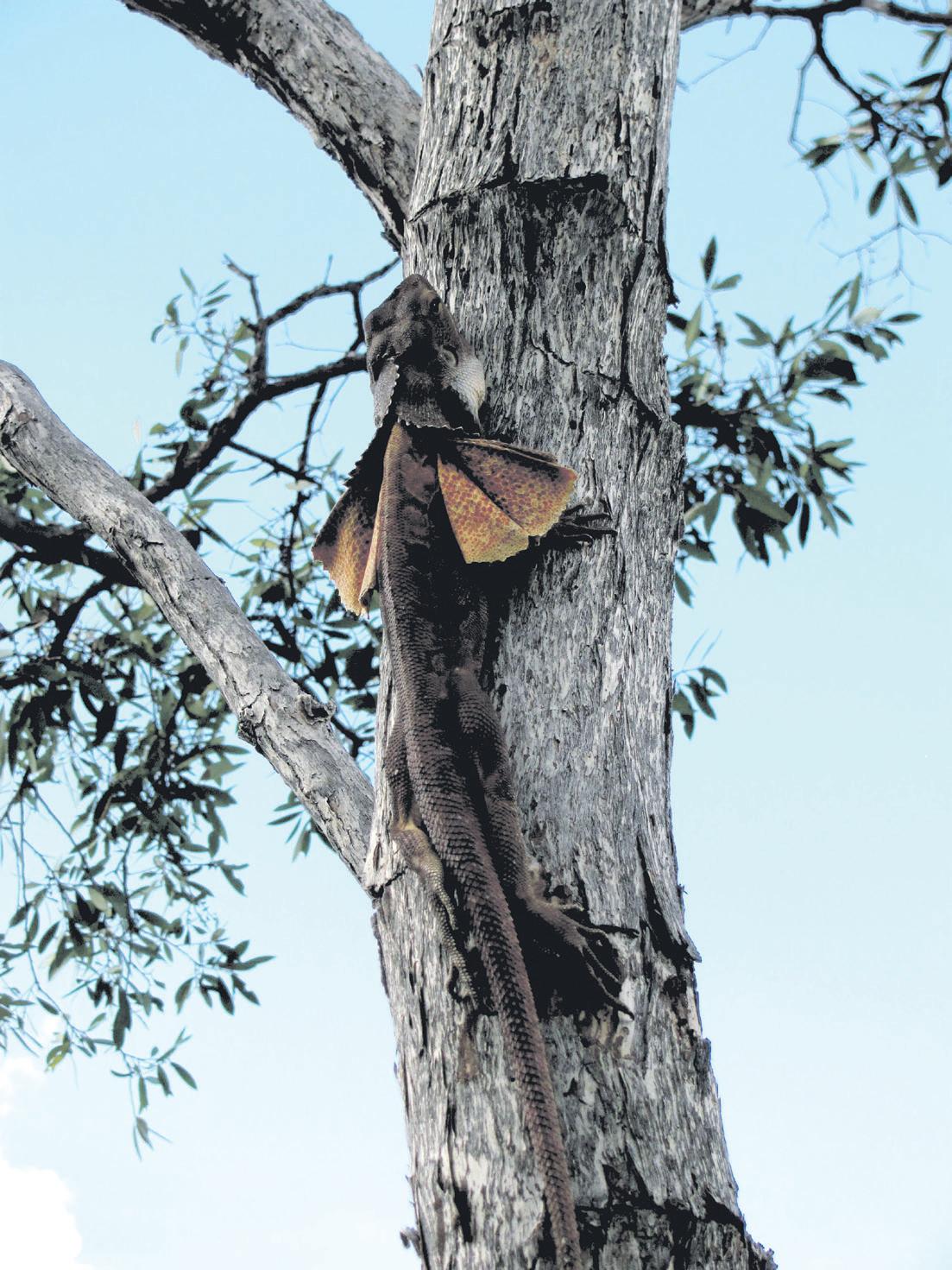
Darwin waterfront precinct Smith St Mall


World Heritage listed Kakadu National Park, is comprised of 20,000 square kilometres. It is listed both for its cultural significance with sacred sites and ancient aboriginal rock carvings, and for the diversity of its flora and fauna
